Below are some pictures of disassemled brake calipers from a 1998 crown
victoria police interceptor
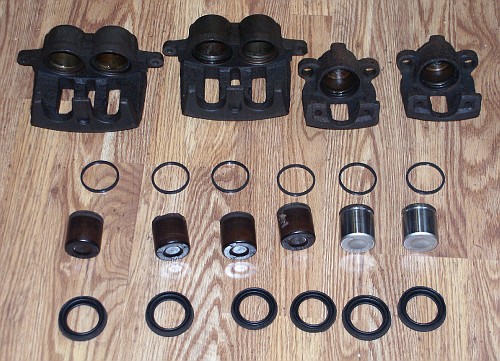
The front calipers on the left used phenolic pistons. The rear calipers
on the right had steel caliper pistons that were chrome plated.

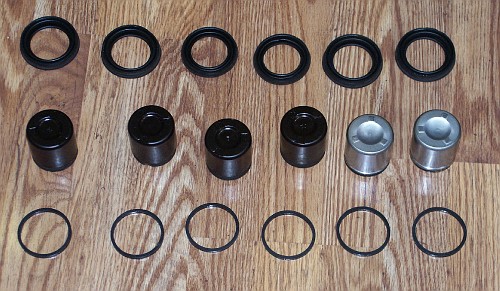
Take note of the square cut piston seals. These make a tight hydraulic
seal between the piston and cast iron body of the caliper. They also
twist as the piston is applied, and cause the caliper piston to retract
some when the brake pedal inside the car is released.
Click here to view a
document with additional information about brake caliper piston seal
rollback.
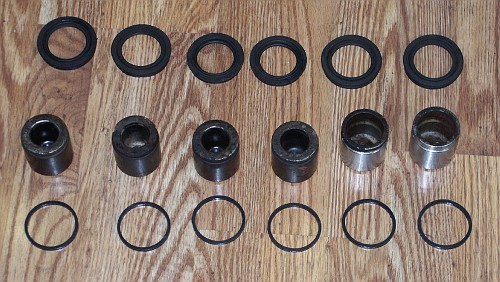
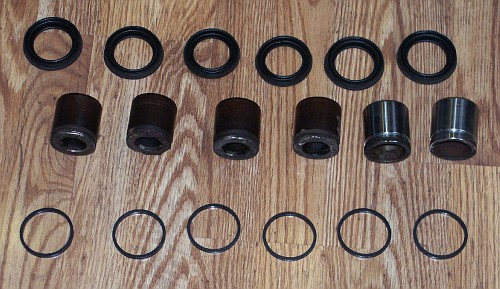
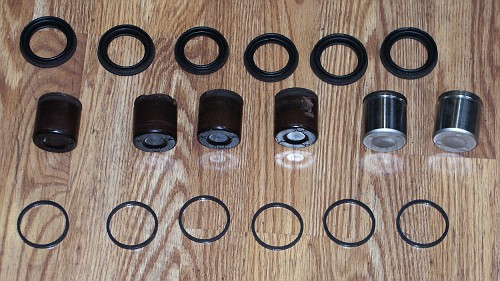
Here's one of the front brake calipers.

Getting the first piston out of the caliper was easy using a blow gun
connected to an air compressor.
However, after popping out the first caliper piston, the second piston
wouldn't come out due to a lack of air pressure behind it because
popping the first piston created a massive air leak inside the caliper.
So the first piston was partially reinserted and held stationary with a
large screwdriver handle, and then the second piston popped out with
some air pressure applied to the banjo bolt port.
Note that you don't
need a huge air compressor to pop out the pistons, a little 5 gallon
one used for air nailing will work for this job. Some people have also
reported success popping the caliper pistons out using a bicycle tire
pump too. If no tools are avaliable, another method to get the caliper
pistons out is to pump the brake pedal inside the car a few times with
the calipers still attached to the brake lines in the car.
I had tried using some pliers to pull the piston out, but this was not
productive and mainly resulted in damage to the piston from
where the pliers were gripping.
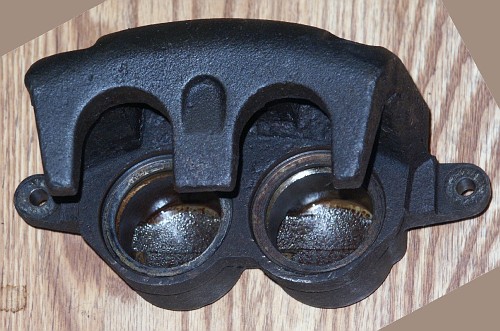
Take note of the bevelled edge in the casting where the square seal
would normally be located on these
low drag calipers. Click here to
view a document about this topic.
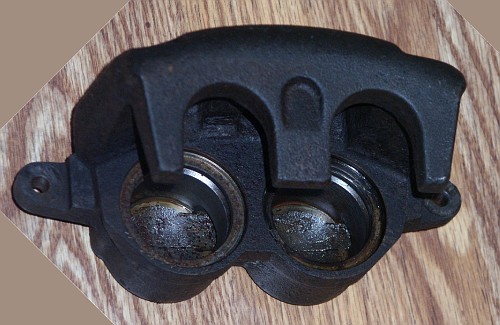

The front right and front left calipers are nearly identical except for
the location of the bleeder valve. A passenger's front brake caliper
will install onto the driver's side of the car, and vise versa. But you
won't be able to properly bleed the brakes due to air rising into an
area that doesn't have a bleeder valve.
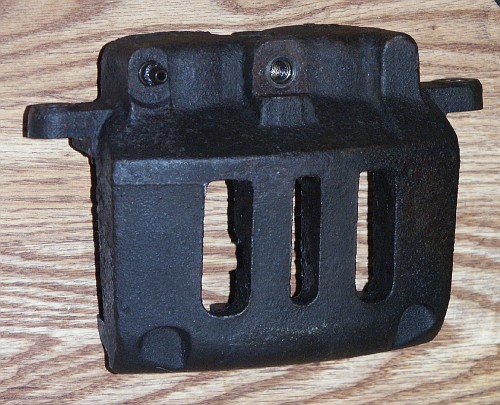
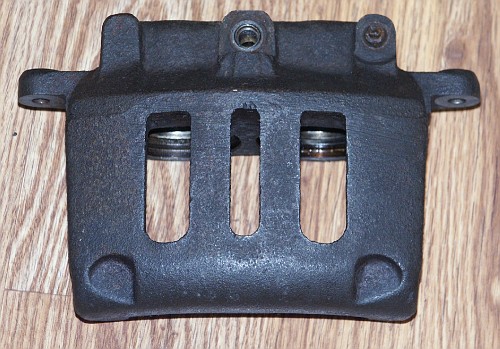
Here are the rear calipers
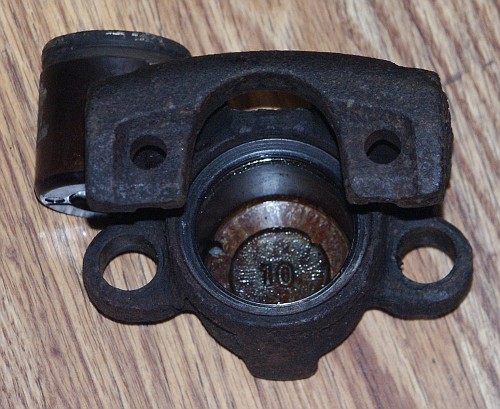
The bleeder screw came out clean from this caliper
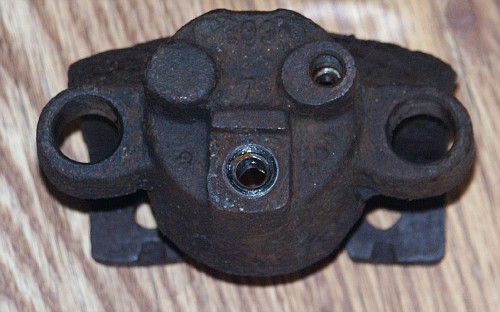
But it snapped off on this caliper
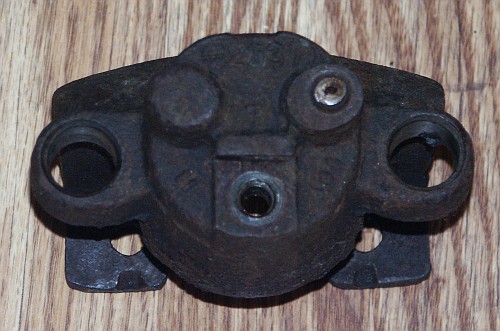
This caliper has some heavy scaly rust on it, but this is not much of a
concern as the caliper is contructed of thick cast iron. And loosing a
little metal on the exterior to corrosion doesn't adversly it's
operation.
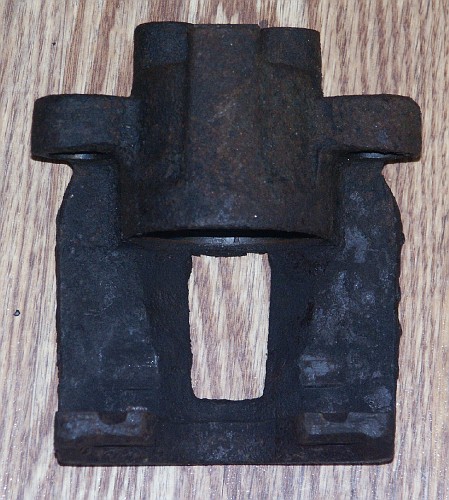
1992 and later crown victoria rear brake calipers do not contain any
parking brake hardware like you'll find on some other vehicles.
Instead, the parking brake system in these cars has a minature set of
shoes inside the rotor hat like you'd find on an older car with rear
drum brakes.
In some brake parts catalogs, you will see crown victoria rear brake
rotors listed with DIH abbreviation in the part description. This
acronym stands for "Drum-In-Hat" and means that the rotor hat will have
a finely machined surface inside to accept the minature parking brake
shoes.
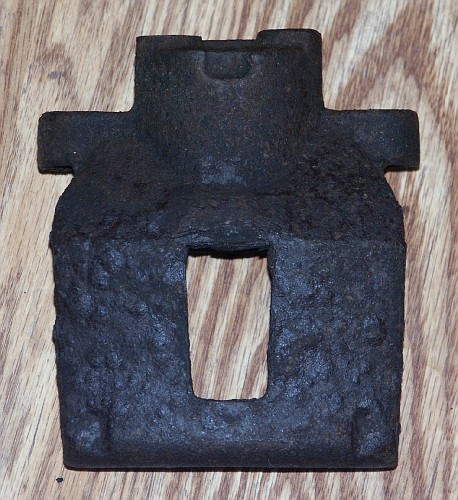
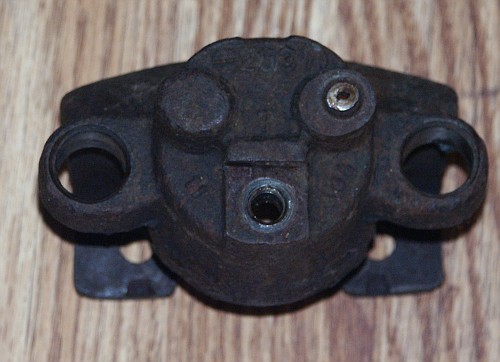
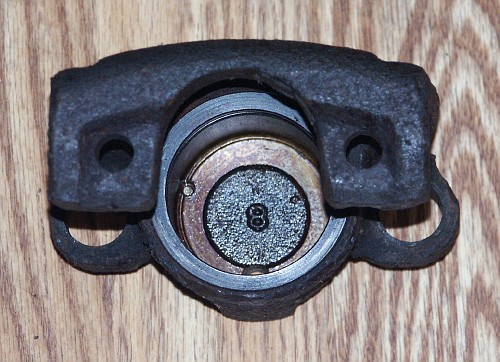


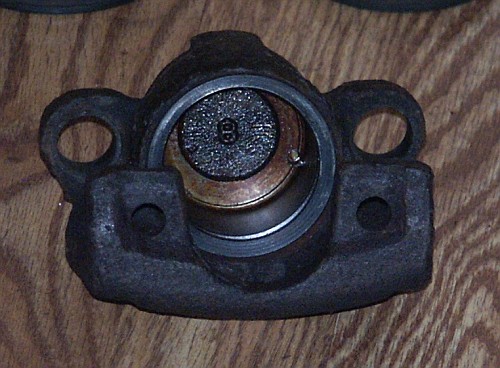
Here are the caliper dust boots
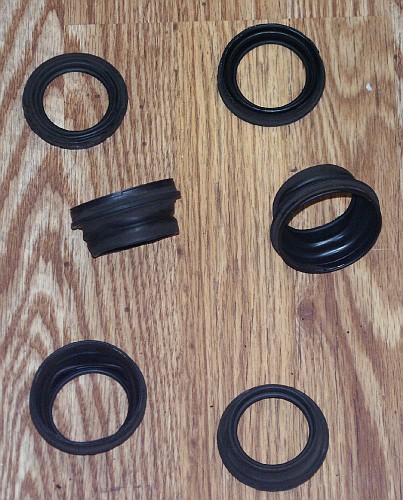
Here's a phenolic (plastic) caliper piston
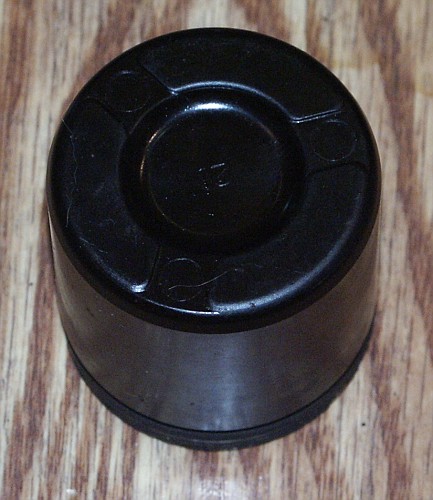
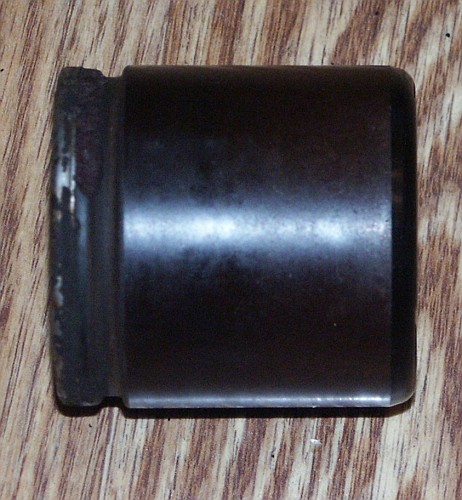
On the bottom of the phenolic caliper piston where the brake pads
contact is a metal ring. In the caliper piston manufacturing industry,
this is referred to as a "capped" piston.
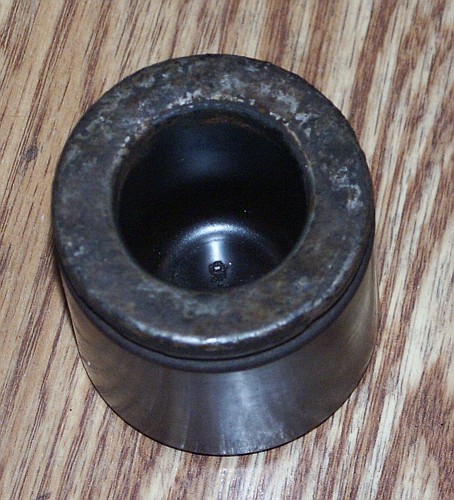
Here's a metal piston from one of the rear calipers.

The groove in the piston is to hold the dust boot. The rubber o-ring
seal mounts inside the cast iron body of the caliper.
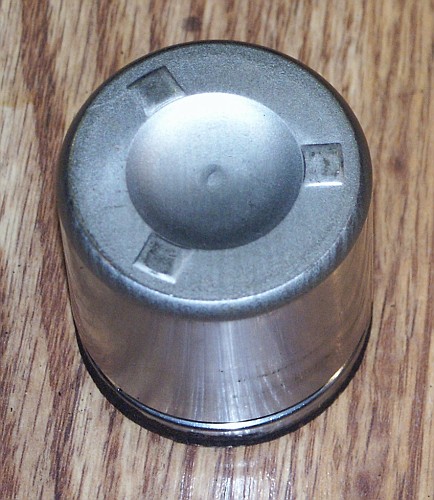
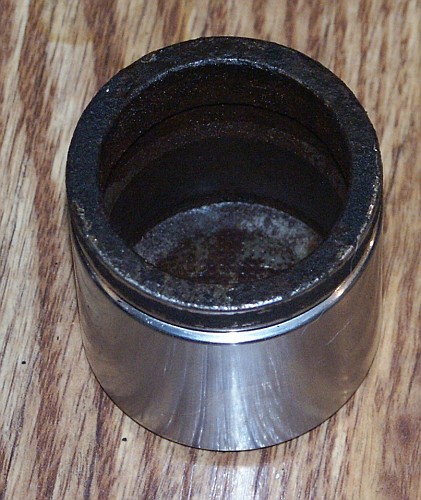

Here's the metal ring from the bottom of one of the phenolic caliper
pistons. This ring was retained really well to the bottom of the piston
and got really mangled when a hammer/chisel were used to remove it.
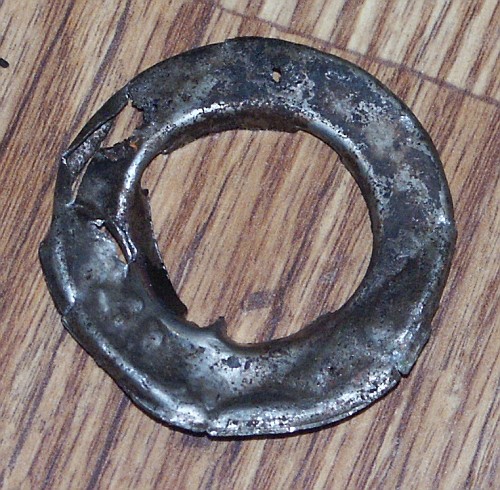
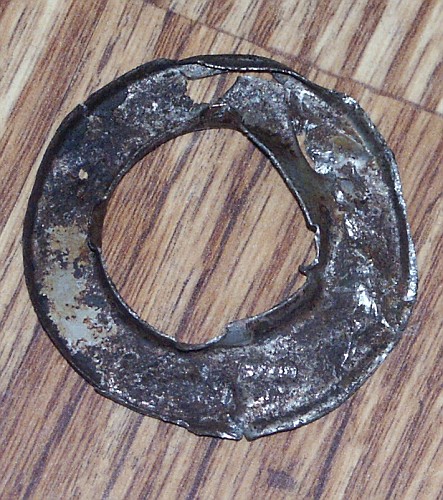
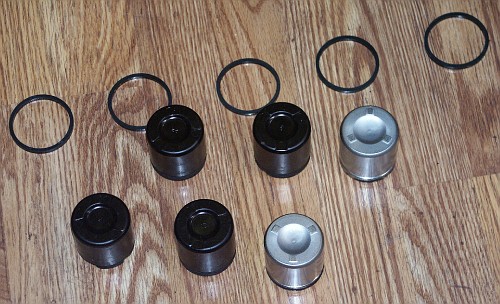
Here are the components that allow the rear caliper to float. Normally
these components would be coated in dielectric grease to keep out
moisture.
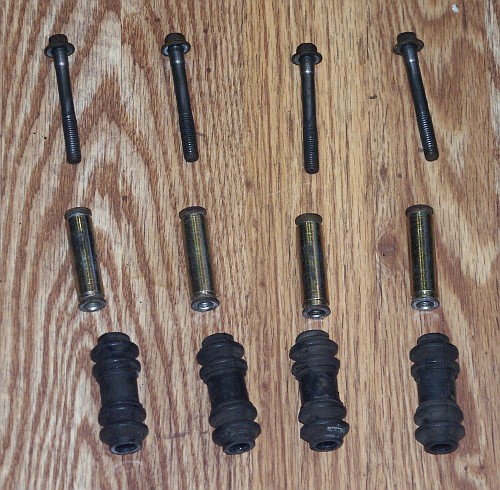
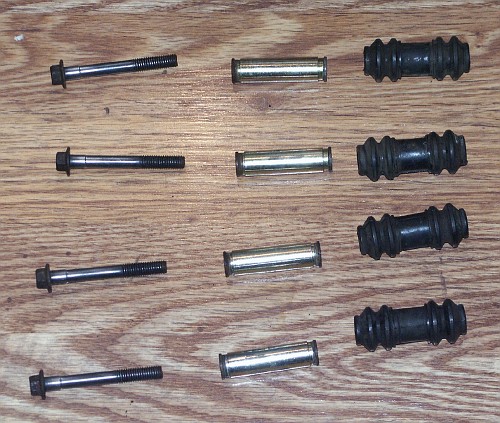
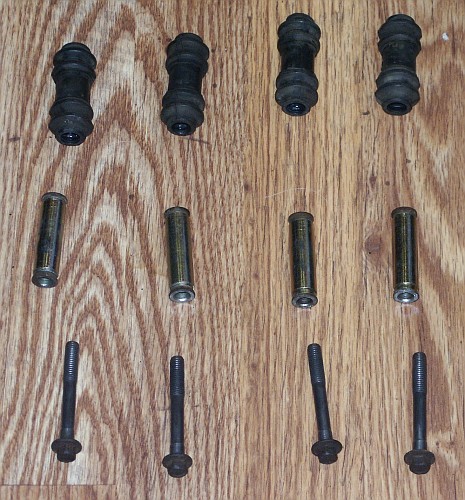

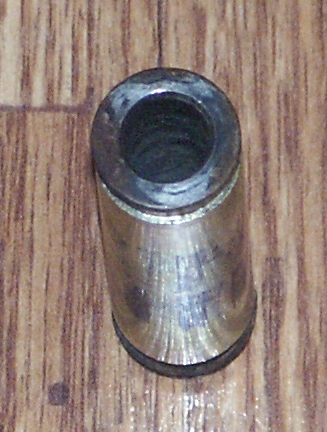
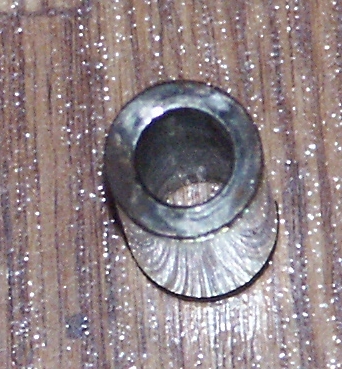
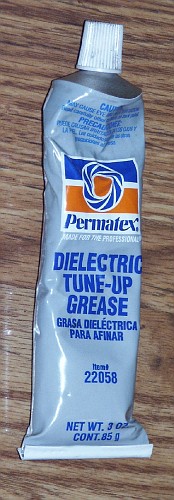
These are the metal inserts that are mounted in between the rear
caliper bracket and the brake pads
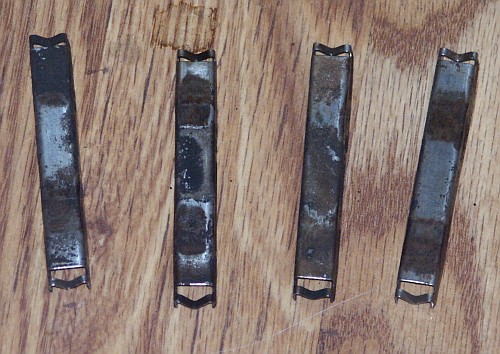
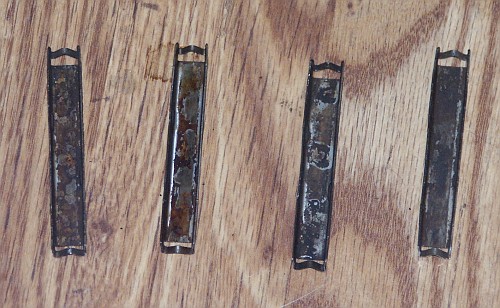
Here are the copper crush washers, a couple banjo bolts, and a bleeder
valve
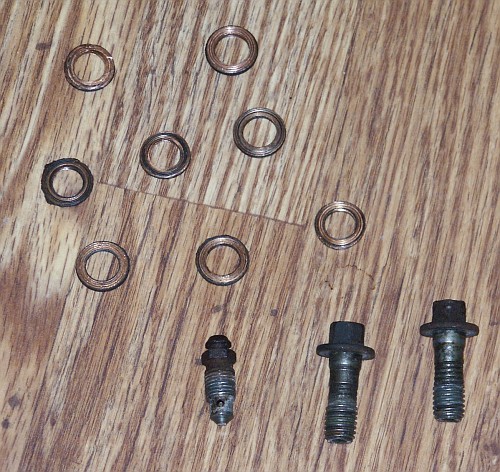
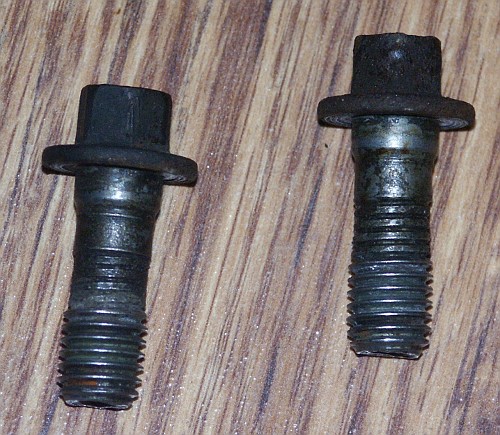
Here you can see one end of the fluid feed passage on the banjo bolt
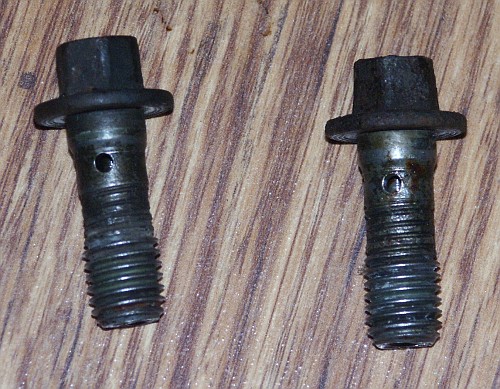
And the other end of the fluid feed hole on the banjo bolt
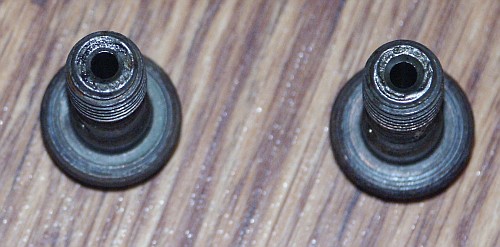
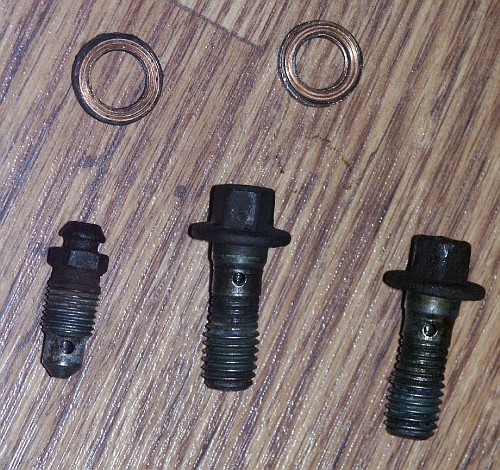
This bleeder was somewhat corroded, but it did come out of the caliper
without breaking

This is the rubber cap which keeps debris out of the bleeder fluid
passage. It's around 10 years old, and was ready to fall of due to age
related rubber deterioration.
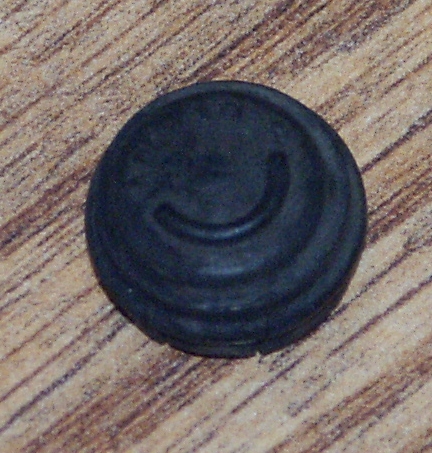
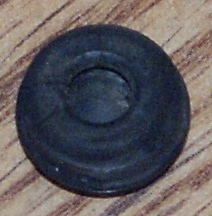
Prior to installation, this washer would be flat. But after
installation it has some fluid sealing grooves cut into it from being
crushed in between components.
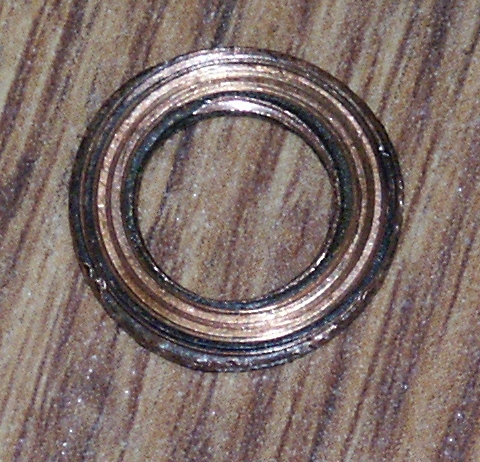
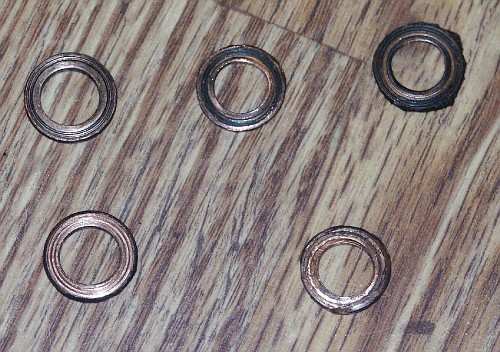
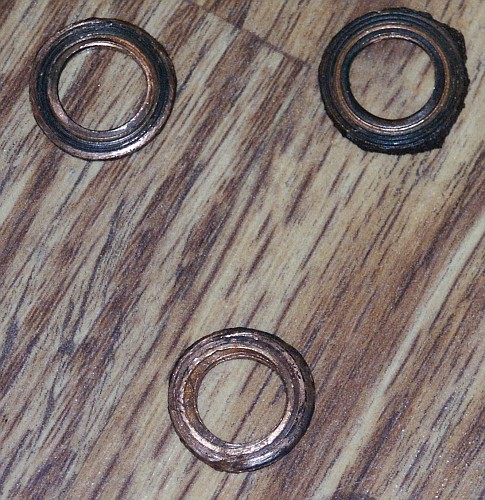
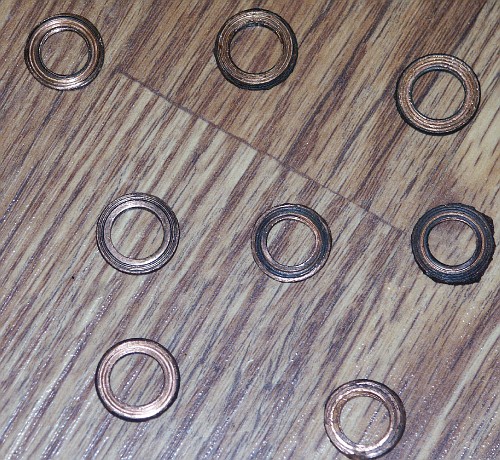
Here are the rubber boots which seal out moisture from the front
calipers floating mechanism.

Here are all 4 old brake hoses from the car. They retain the shape they
were held in for the past several years even after being removed from
the car.
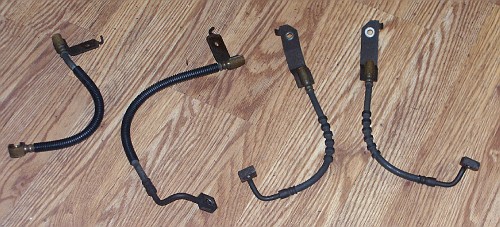
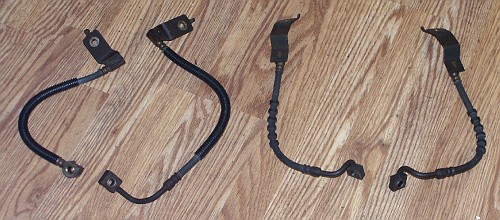
Here's a banjo bolt with a couple crush washers on it
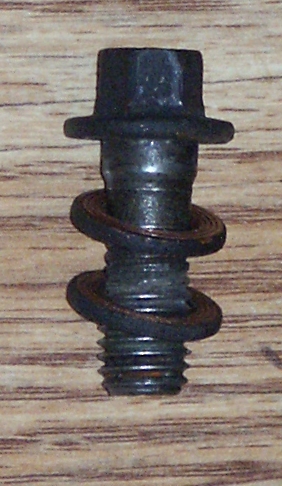
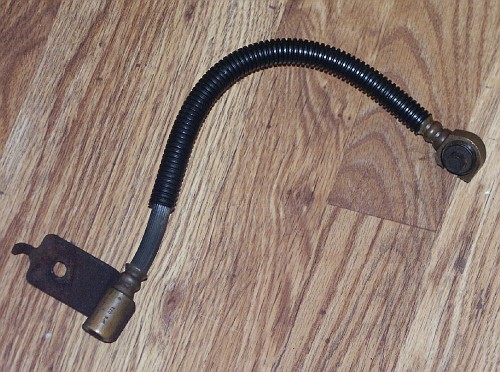
And a couple of the surfaces that the crush wahsers would get crushed
against.
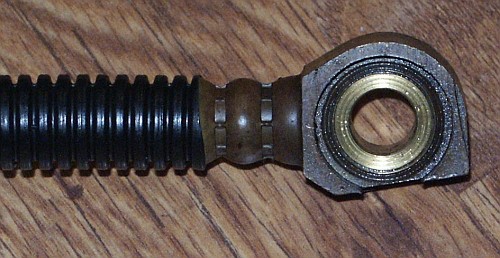
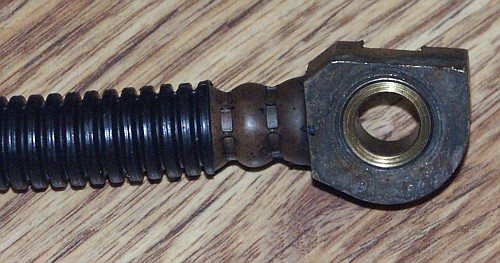
A marketing picture from Undercar Express about their rebuilt brake
calipers:
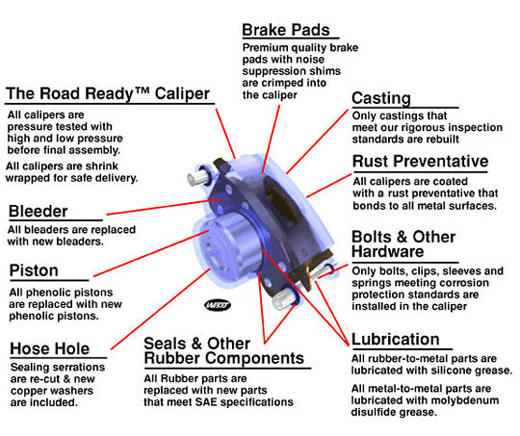
Links:
http://www.undercarexpress.com
http://www.mpbrakes.com
http://www.brakequip.com
http://www.fedhillusa.com
http://www.eastwood.com
http://www.mastercool.com/pages/flaring_tools.html
http://www.carcraft.com/howto/50919
http://www.classictrucks.com/tech/0501cl_brake_line_basics





























































